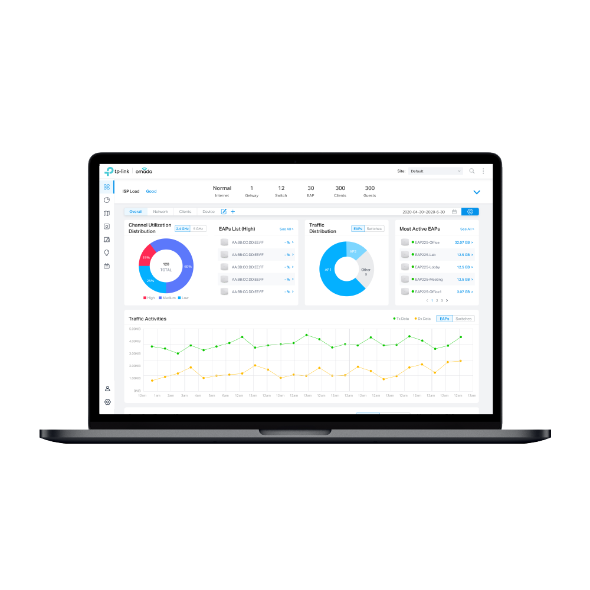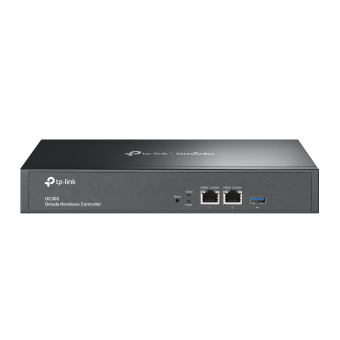How to configure URL blacklist or whitelist using Omada Controller's URL Filtering feature
OC200 , OC300 , Omada Software Controller
Recent updates may have expanded access to feature(s) discussed in this FAQ. Visit your product's support page, select the correct hardware version for your device, and check either the Datasheet or the firmware section for the latest improvements added to your product. Please note that product availability varies by region, and certain models may not be available in your region.
URL Filtering is a useful function in Omada Controller, which allows the admin of the network to set URL permit lists and URL deny lists for the network clients.
- The application scenarios of the blacklist
If the network administrator doesn’t want the network users to access some websites, for example, like parental control, the parents don’t want their children to visit some unscrupulous websites, they can set a URL to deny lists to prevent traffic directed to these sites.
- The application scenarios of whitelist
If the network administrator doesn’t want the network users to access the whole internet except few specific websites, for example, in a company the office network can’t access the internet, but the employees need to access certain information search sites, the network administrator can set a URL whitelist to meet this need. This article will guide you to set a URL blacklist or a URL whitelist using Omada Controller’s URL filtering feature.
Gateway Rules and EAP Rules
There are two kinds of devices that you can apply URL Filtering Rules to, Omada Gateway or EAP. If applying a URL Filtering Rule to EAP, this rule will affect the wireless devices that connect to the EAP. If applying a rule to the gateway, the rule may affect any devices in the local network according to the rule settings.
- URL blacklist
- Go to Settings -> Network Security -> URL Filtering, choose Gateway Rules or EAP Rules according to your purpose, then click “+ Create New Rule”. Here we take Gateway Rules as an example.

- On the new page, please enter the name of the rule, check “Enable” at Status, and choose “Deny” Policy. The Source Type decides what kind of source the rule is applied to. You can choose the source according to the subnet or the IP address. If it is an EAP Rule, the source type will be the SSID. Finally, please add all the website URLs that you want to block. Please note that the domain name which contains a wildcard (*) is supported, like *.google.com. One domain name with a wildcard (*) can match multiple subdomains. Click apply, and the URL blacklist has been made.

Upon configuration, the devices connected to the wireless network cannot access sites in the URL Filtering Rule.
- URL whitelist
- Here we also take Gateway URL whitelist as an example. The first step is to set a list of URLs that allows the clients to access them. The process of this step is as same as the process of setting the URL blacklist, except choose “Permit” Policy rather than “Deny” Policy. Please refer to the “URL blacklist” part in this article for configuration.
- Another rule is required to prevent the clients from accessing all other websites. Click “Create New Rule”, enter the name of this deny rule, choose the policy as “Deny”. After choosing the source type, in the URL bar, enter a “.” symbol to represent all possible URLs, like the following figure:

Note: If you are setting EAP URL whitelist, please use “*” Symbol instead of “.” symbol, like the following figure:

- Finally, make sure there are two URL Rules, and the first one being the permit rule, the second one being the deny rule, like the following figure.

Related Articles:
How to configure Multi-Networks & Multi-SSIDs on Omada SDN Controller
What is the function we can configure when the switch is managed by Omada SDN Controller?
Looking for More
Questa faq è utile?
Your feedback helps improve this site.
What’s your concern with this article?
- Dissatisfied with product
- Too Complicated
- Confusing Title
- Does not apply to me
- Too Vague
- Other
Grazie
We appreciate your feedback.
Click here to contact TP-Link technical support.
Questo sito utilizza i cookies per migliorare l'esperienza di navigazione, analizzare le attività online e offrire agli utenti una migliore user experience. Puoi disattivare o rifiutare il loro utilizzo in qualunque momento. Per maggiori informazioni consulta la nostra privacy policy .
Questo sito utilizza i cookies per migliorare l'esperienza di navigazione, analizzare le attività online e offrire agli utenti una migliore user experience. Puoi disattivare o rifiutare il loro utilizzo in qualunque momento. Per maggiori informazioni consulta la nostra privacy policy .
Basic Cookies
Questi cookies sono necessari per il corretto funzionamento del sito e non possono essere disattivati nel tuo sistema.
TP-Link
SESSION, JSESSIONID, accepted_local_switcher, tp_privacy_base, tp_privacy_marketing, tp_smb-select-product_scence, tp_smb-select-product_scenceSimple, tp_smb-select-product_userChoice, tp_smb-select-product_userChoiceSimple, tp_smb-select-product_userInfo, tp_smb-select-product_userInfoSimple, tp_top-banner, tp_popup-bottom, tp_popup-center, tp_popup-right-middle, tp_popup-right-bottom, tp_productCategoryType
Youtube
id, VISITOR_INFO1_LIVE, LOGIN_INFO, SIDCC, SAPISID, APISID, SSID, SID, YSC, __Secure-1PSID, __Secure-1PAPISID, __Secure-1PSIDCC, __Secure-3PSID, __Secure-3PAPISID, __Secure-3PSIDCC, 1P_JAR, AEC, NID, OTZ
Zendesk
OptanonConsent, __cf_bm, __cfruid, _cfuvid, _help_center_session, _pendo___sg__.<container-id>, _pendo_meta.<container-id>, _pendo_visitorId.<container-id>, _zendesk_authenticated, _zendesk_cookie, _zendesk_session, _zendesk_shared_session, ajs_anonymous_id, cf_clearance
Analytics e Marketing Cookies
I cookies analitici ci permettono di analizzare le tue attività sul nostro sito allo scopo di migliorarne le funzionalità.
I marketing cookies possono essere impostati sul nostro sito dai nostri partner pubblicitari allo scopo di creare un profilo di tuo interesse e proporti contenuti pubblicitari rilevanti su altri siti.
Google Analytics & Google Tag Manager
_gid, _ga_<container-id>, _ga, _gat_gtag_<container-id>
Google Ads & DoubleClick
test_cookie, _gcl_au









1.0_normal_1592202397383a.png)
